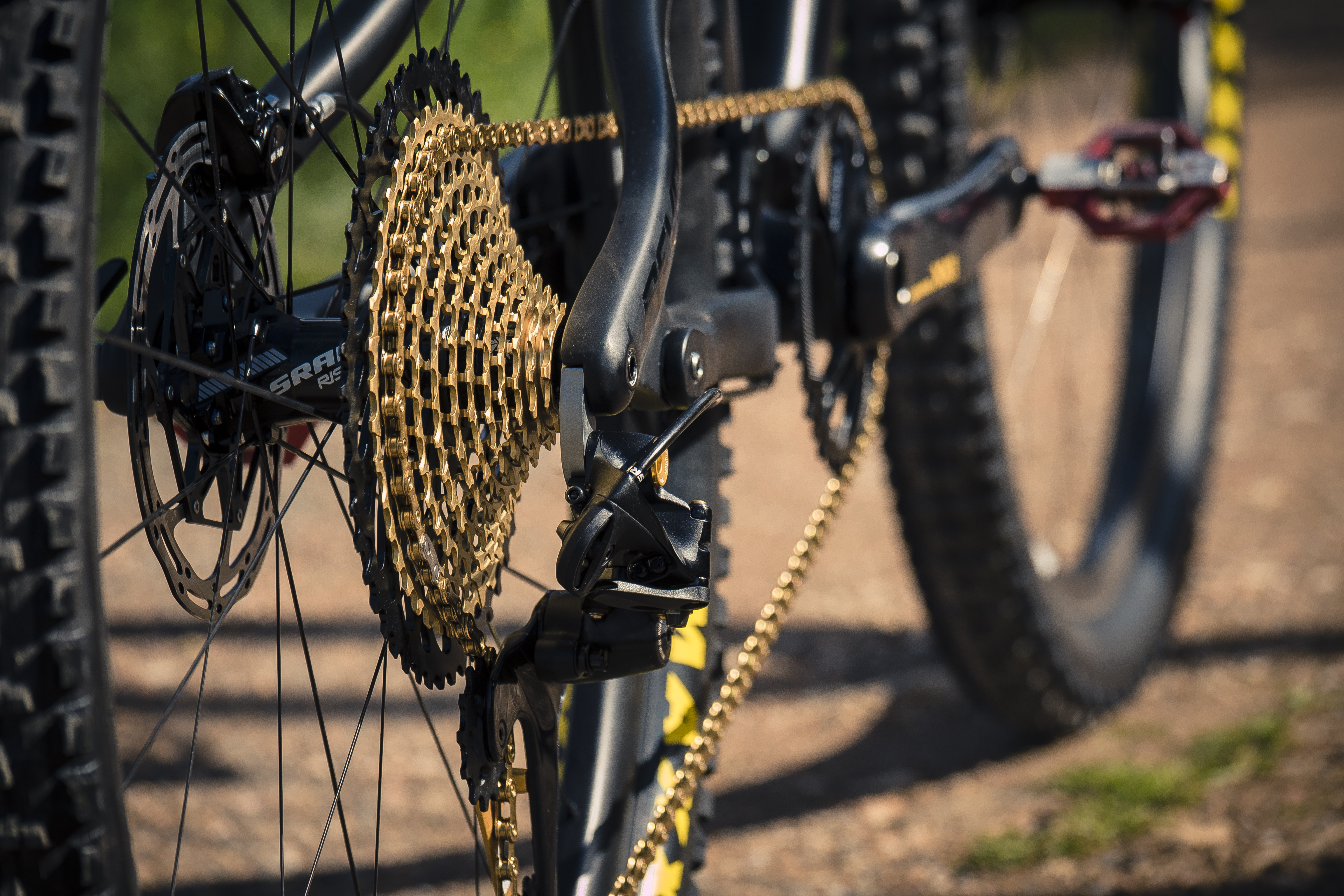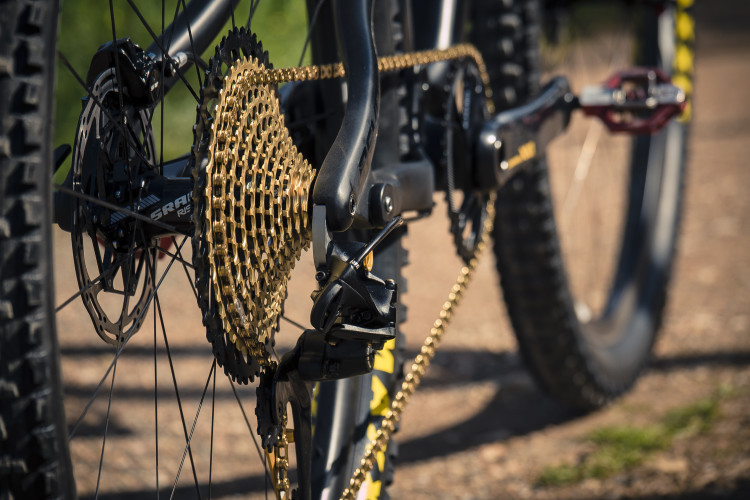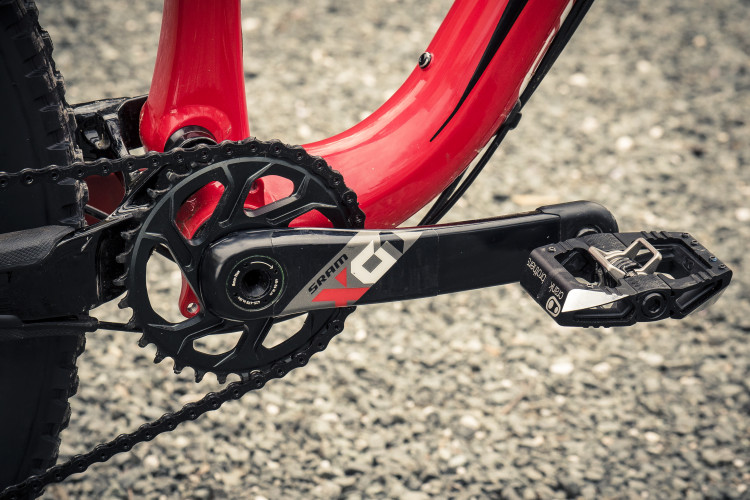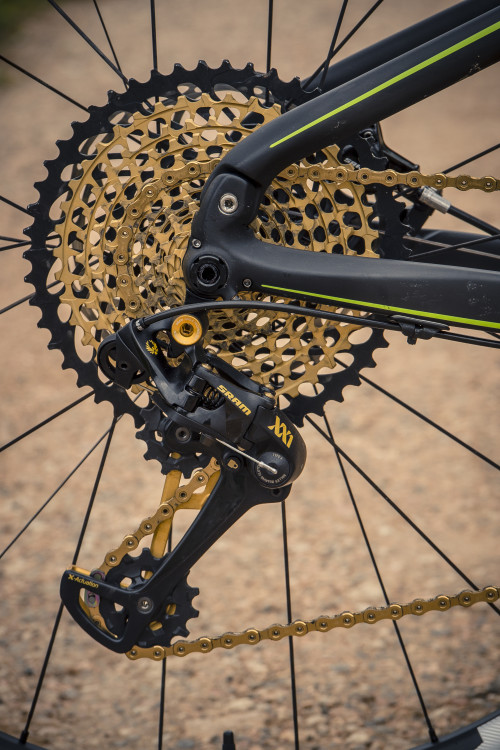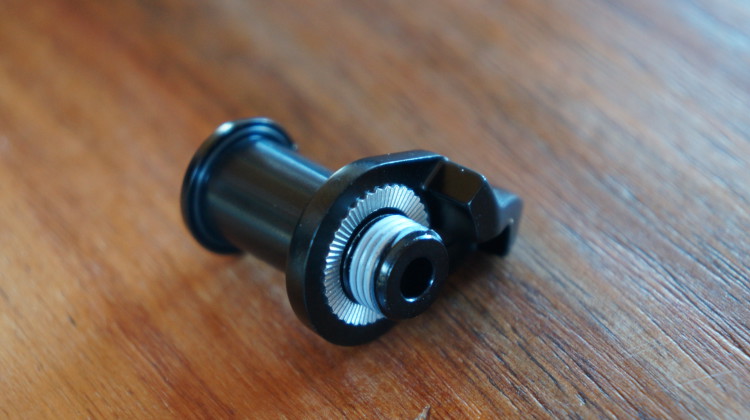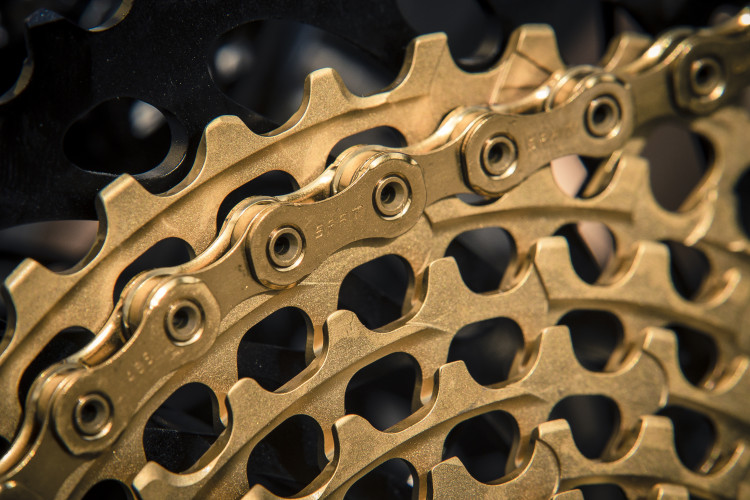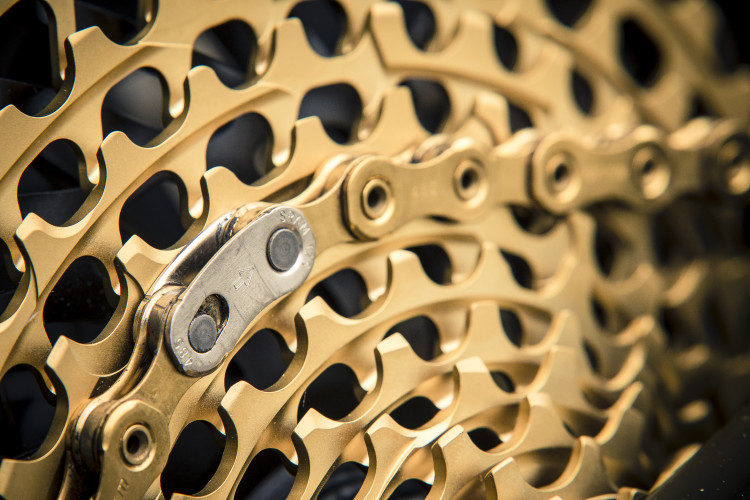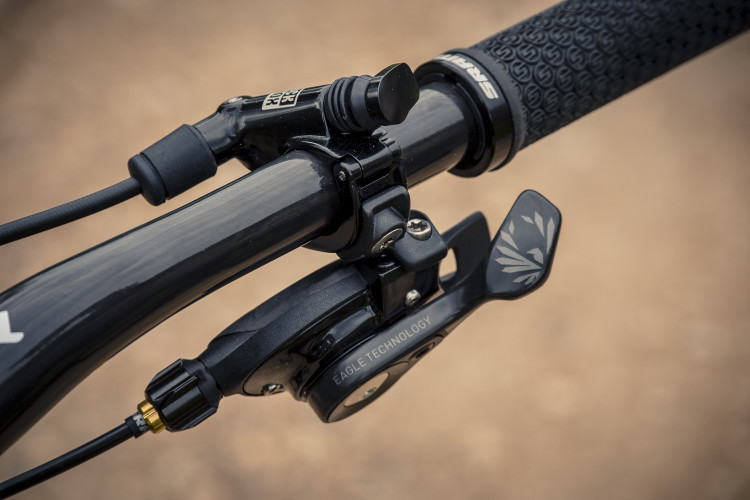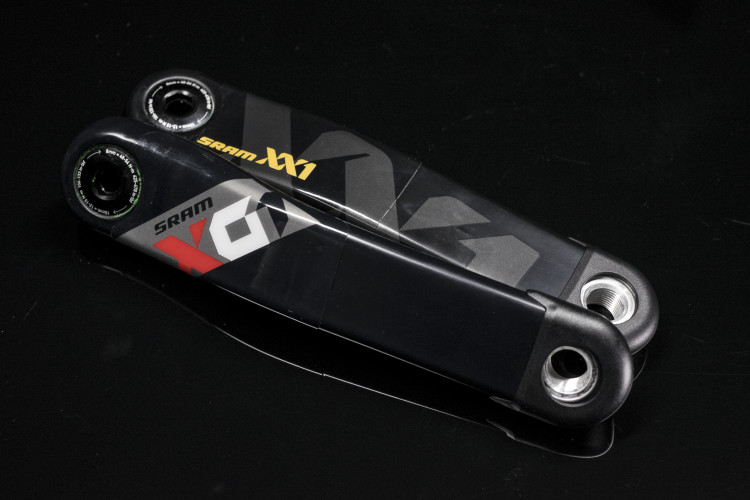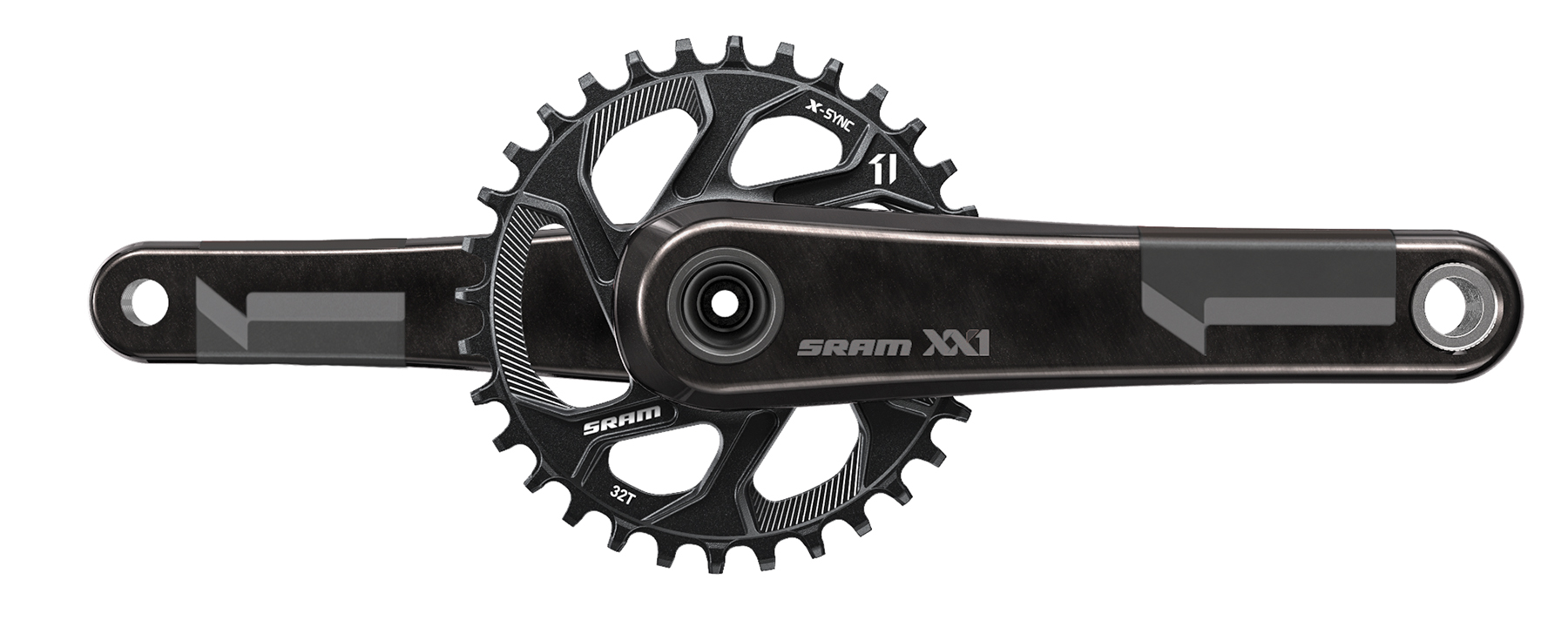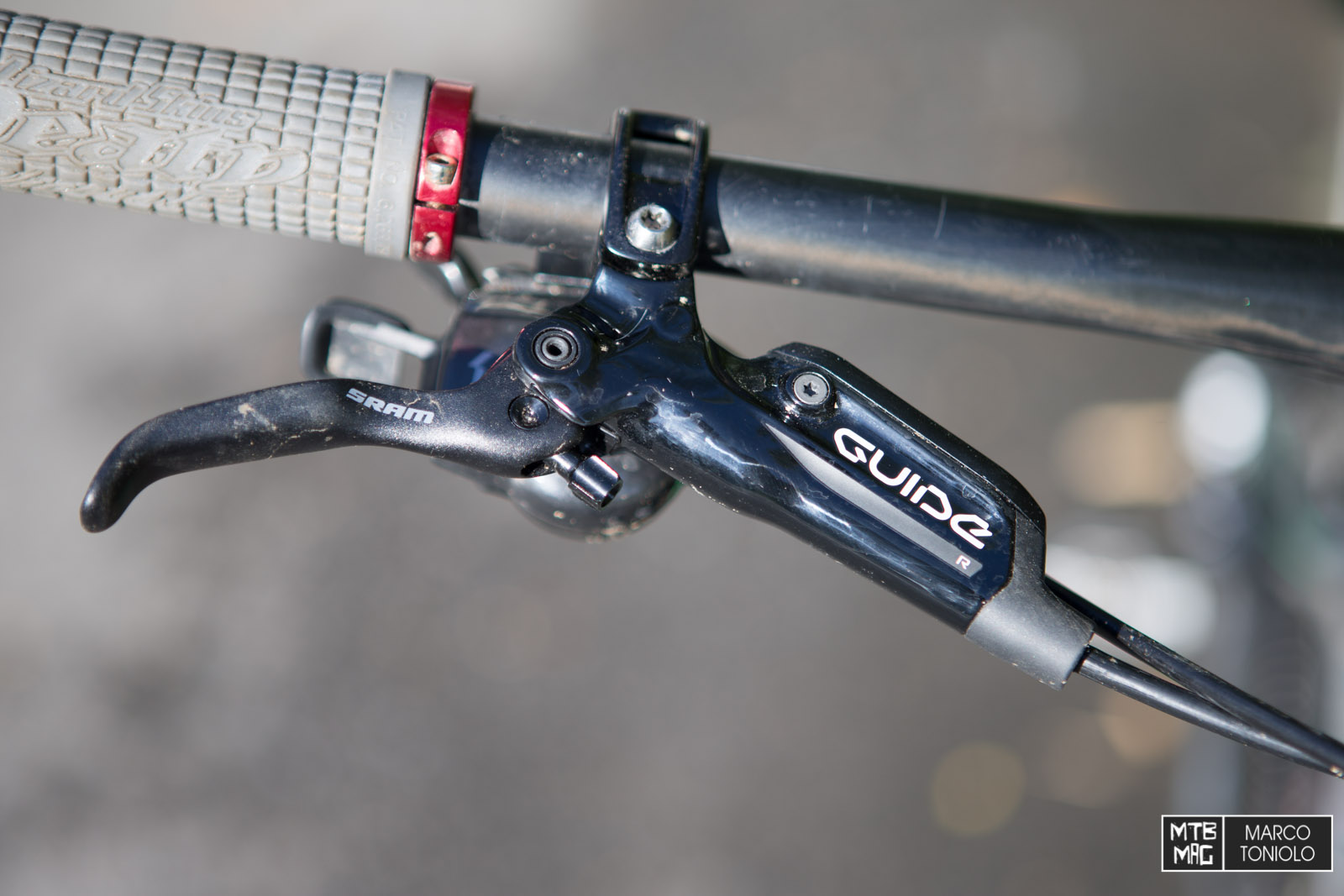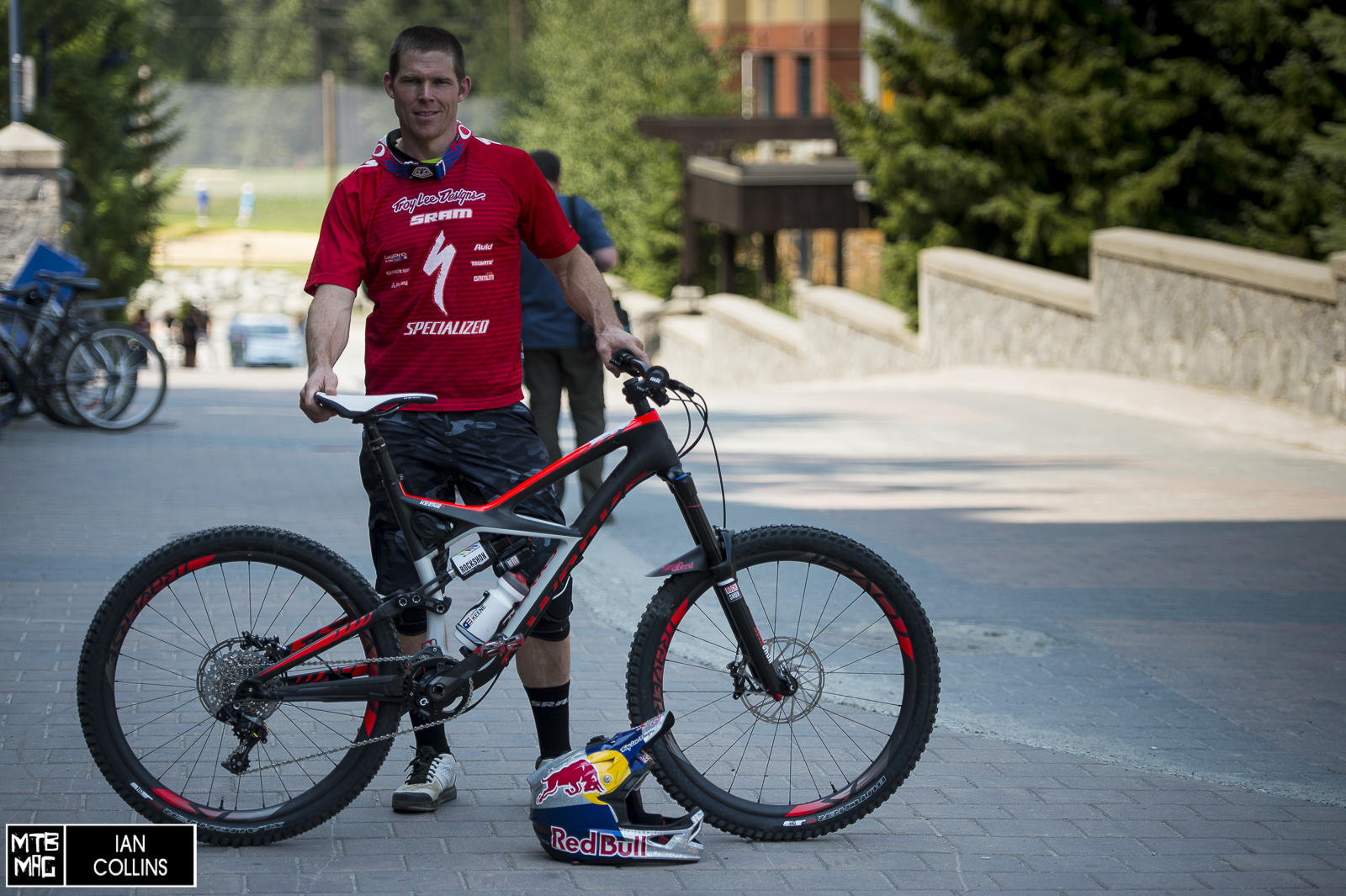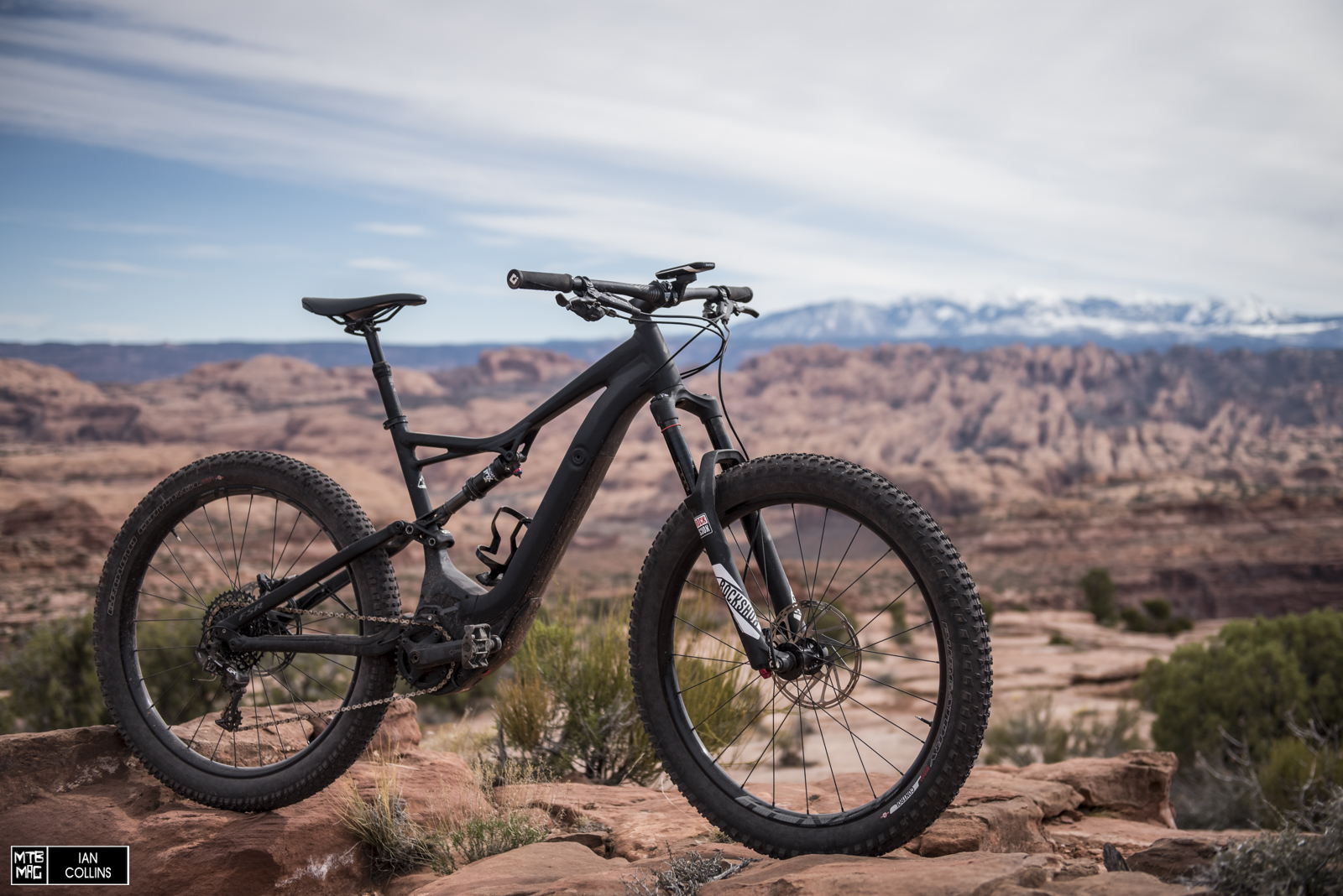[ad3]Today SRAM announced two new 1×12 speed drivetrains: the XX1 and XO1 Eagle.
The American brand continues on the single chainring road that it took few years ago with the first dedicated 1×11 XX1 drivetrain. The advantages of this choice are quite evident:
- Less weight than 2x.
- Few chaindrop problems: the chainring can have bigger teeth because its function is not shifting.
- Easier to use for everyone from beginners to pros.
- A clean handlebar, something quite important in the age of dropper posts.
- Less maintenance and less shifting-tuning.
- Better pedal efficiency: nearly all frames are built with the 32T chainring in mind.
- More freedom to develop new frames around shorter chainstays & their inherent design constraints.
Now the question is why 2x, or even 3x, drivetrains are still around. The answer is easy: until now, the 1×11 range is still somewhat limited. For some riders the gearing is not enough to allow them to climb steep bits or to pedal fast sections.
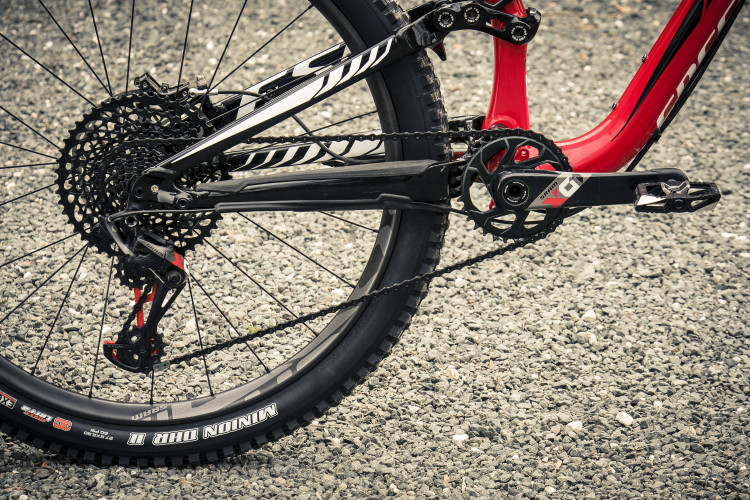
SRAM’s solution: add a 50T cog to the 11T cassette. The Eagle drivetrain was born.
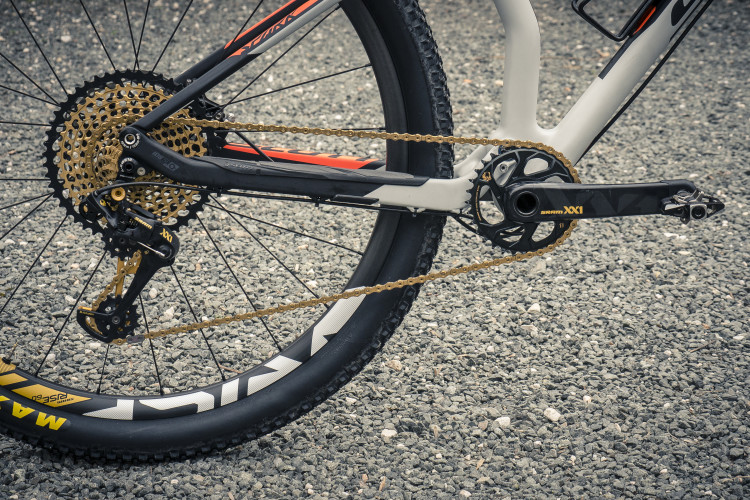
It sounds simple but it’s not so easy to engineer. The hardest part of the project, SRAM says, was to develop 1×12 drivetrain without having to introduce new standards. You can mount a 1×12 on any existing XD driver body. No need for a Boost 148 frame. Apart from this, the Eagle is a completely new drivetrain designed from scratch and it will available as a XX1 Eagle and an X01 Eagle. Let’s dive into the details.
X-Dome Eagle Cassette
The 10-50T cassette is the “heart” of the Eagle drivetrain. In both XX1 and X01 versions they are quite similar except for the color: the XX1 cassette has a titanium nitride finish on the steel cogs to harden their surface and reduce the wear.
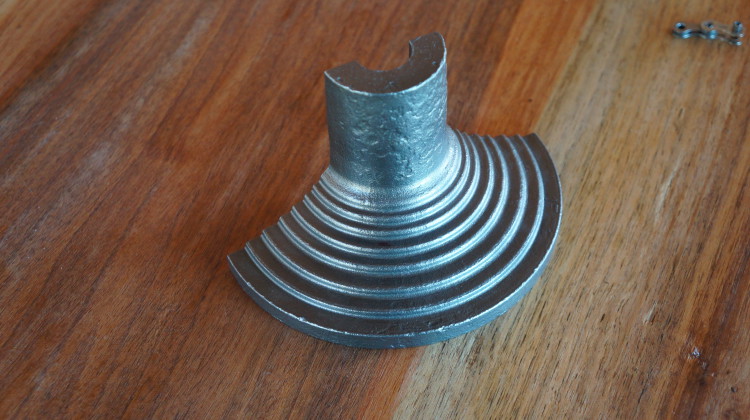
It’s CNC’ed from a steel block like the one in the photo.
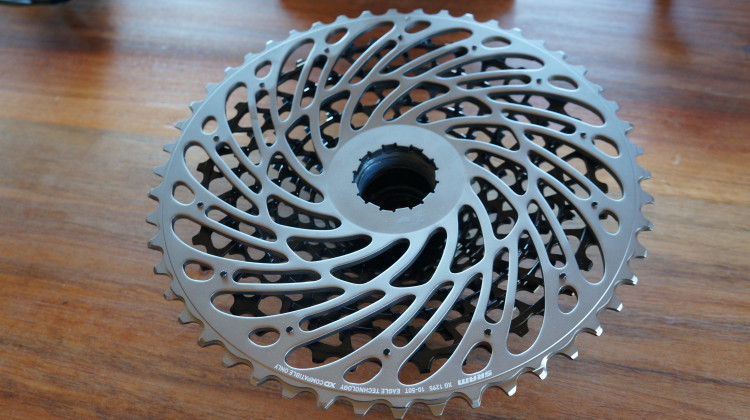
The first 11 cogs (10-42) are made of steel, the last one (50) of aluminum. These gearing is as follows: 10, 12, 14, 16, 18, 21, 24, 28, 32, 36, 42, 50

As said before, the cassette can be mounted on every XD driver body. The 42T cog is located more towards the center of the cassette, therefore its wear is smaller than on the 1×11 drivetrain because of a more favourable chainline.
Weights
XX1 and X01: 355 grams.
Prices
XX1: $420 | €458 | £353
X01: $360 | €392 | £302
Crankset and chainring
Completely redesigned, compared to their original 1×11 XX1 cassette, the lighter XX1 cassette is aimed at XC, while the X01 is tailored to heavy duty (ab)uses. Both new cranksets are carbon, the chainrings are basically the same materials.
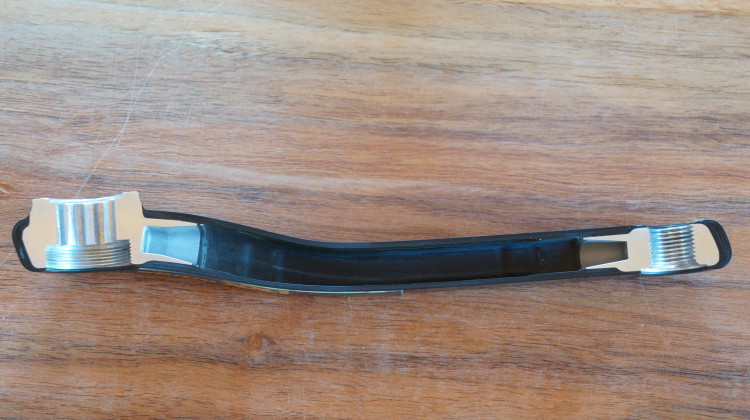 The thickness of the carbon layers is where the difference lies.
The thickness of the carbon layers is where the difference lies.
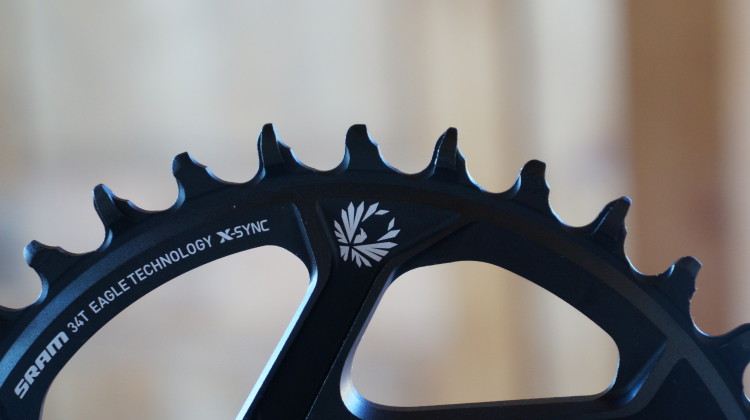
As you can see from the photo, the teeth have the new X-Sync 2 design that makes the chainring less noisy and more resistant to elements like mud, increasing their durability. They are also compatible with the original 1×11 drivetrains.
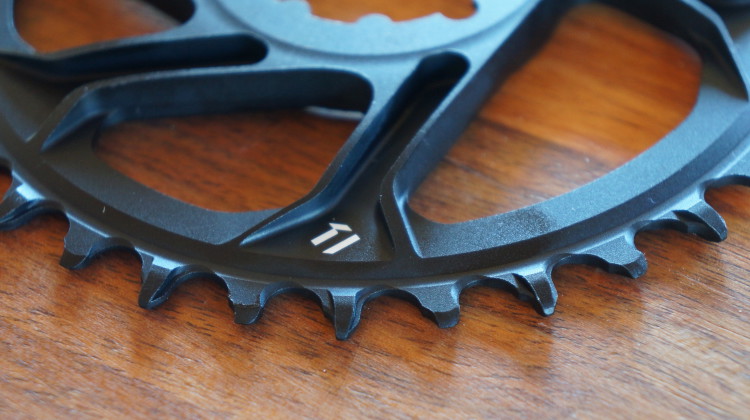
Two chainrings are available, with two different chainlines: one for the boost drivetrains and one for the standard ones. All chainrings are compatible with the GXP standard direct mount cranksets (S1400, X01, XX1, etc), but not with the old BB30 cranks.
Available chainrings: 30-32-34-36 and 38T.
Weights
XX1: 465g (includes 32t X-SYNC™ 2 Eagle chainring)
X01: 495g (includes 32tX-SYNC™ 2 Eagle chainring)
Prices
XX1: $425 | €463 | £356
X01: $390 | €426 | £328
Rear derailleur
The new Eagle rear derailleur was designed with the 50T cog in mind.
Good news: the mounting interface with the frame now has been modified with a bushing in between the derailleur and the screw, to avoid loosening during the riding that is synonymous with SRAM 1×11 drivetrains. This way there is less friction and the problem is solved.
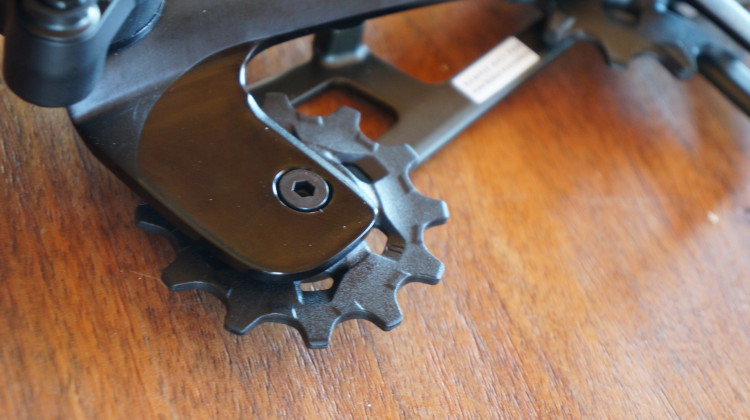
The upper pulley still has 12 teeth, but they are not X-Sync anymore, so that mud and dirt don’t stick to them so much like in the past and the shifting remains smooth all the time. Its position is placed a little further behind to allow the 50T shifting.
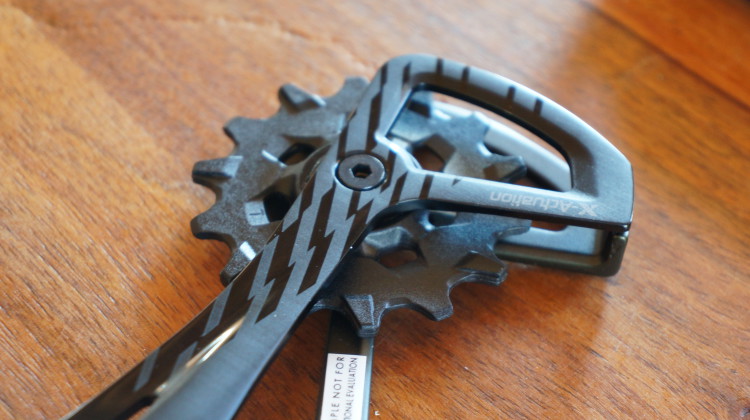
The lower pulley has 14 teeth with X-Sync profile. With this bigger pulley the chain glides better, and the rear derailleur reaches the 50T cog without being too long.
The clutch comes in its third generation: the Type 3. It features a smoother torque curve.
Weights
XX1: 264g
X01: 276g
Prices
XX1: $289 | €304 | £234
X01: $220 | €240 | £185
Chain
To fit a gear more in the drivetrain, the cogs are closer to each other, therefore the chain has to be thinner. SRAM claims it to be the strongest and most wear-resistant chain in the world. Let’s see why.
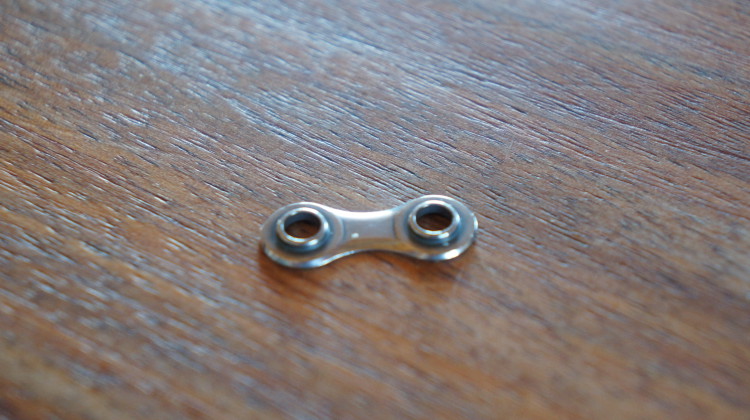
The chain’s links have a smooth radius, with no sharp edges, in order to reduce friction, noise and wear on the whole drivetrain components. The design also allows for a flatter plate, which means more consistent chain riveting and strength. The black and gold chain models have the same titanium nitride finish as the cassette to increase the chain’s durability and smoothness. It fits 1×12 drivetrains only.
The Power lock chain connector with Flowlink is brand new too, with longevity and chain smoothness in mind.
Weights
XX1: 250g
X01: 250g
Prices
XX1:$60-85 | €66-92 | £50-71
X01: $60-85 | €66-92 | £50-71
Trigger
To manage the 12 gears, SRAM had to update the trigger, which can be used with a 1×12 drivetrain only. Grip Shift is still available too.
Weights
XX1: 122g
X01: 126g
Prices
XX1: $162 | €170 | £131
X01: $127 | €145 | £112
X01 and XX1 head to head
The two Eagle models have the same technical specifications, but their purpose is different: the XX1 is lighter, aimed at cross country riding, while the X01 is slightly heavier and more robust, with enduro riding in mind. The differences are few:
- the XX1 rear derailleur is lighter and has a carbon cage, while the X01 one is heavier and has a alloy cage.
- Cranksets: both are carbon, but the XX1 has thinner layers. Externally they look the same, except for the decals.
XX1
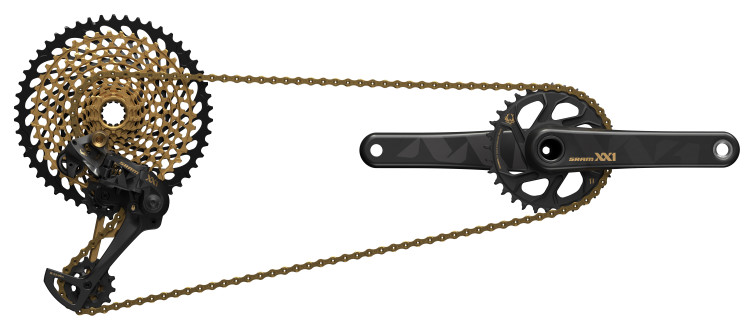
The whole XX1 drivetrain weighs 1456 grams, in these specs: XX1 Eagle™ Crankset (includes 32t X-SYNC™ 2 Eagle™ chainring) XX1 Eagle™ Rear Derailleur XX1 Eagle™ Trigger Shifter XG-1299 Eagle™ Cassette Eagle™ Chain BB GXP Team
Price: $1,417 | €1,524 | £1,173
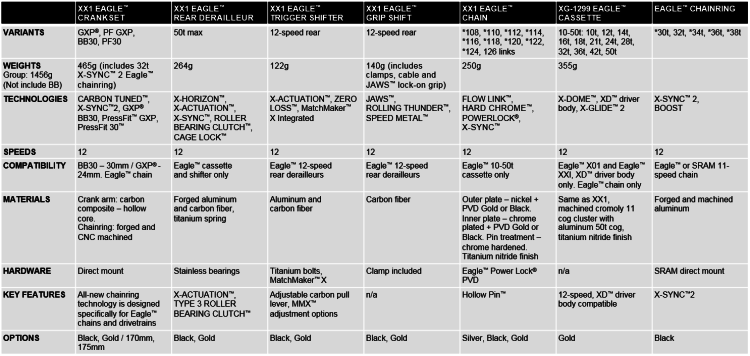
X01
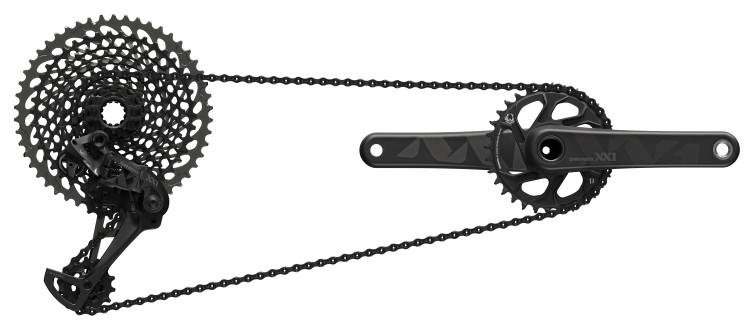 The whole XX1 drivetrain weighs 1.502 grams, in these specs: X01 Eagle™ Crankset (includes 32t X-SYNC™ 2 Eagle™ chainring) X01 Eagle™ Rear Derailleur X01 Eagle™ Trigger Shifter XG-1295 Eagle™ Cassette Eagle™ Chain BB GXP Team
The whole XX1 drivetrain weighs 1.502 grams, in these specs: X01 Eagle™ Crankset (includes 32t X-SYNC™ 2 Eagle™ chainring) X01 Eagle™ Rear Derailleur X01 Eagle™ Trigger Shifter XG-1295 Eagle™ Cassette Eagle™ Chain BB GXP Team
Price: $1,193 | €1,306 | £1,005
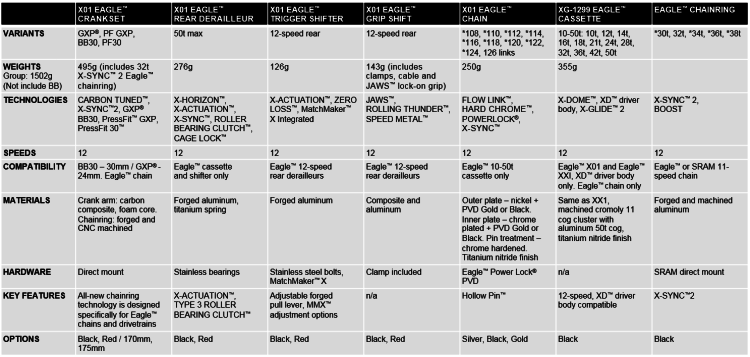
First ride
We spent a whole week in Tuscany with the SRAM guys riding different bikes and different new products. Each of these bikes had the new Eagle drivetrain, XX1 or X01. At the end of the week we could race the first Superenduro 2016 venue on the Specialized Enduro 650b pictured below.
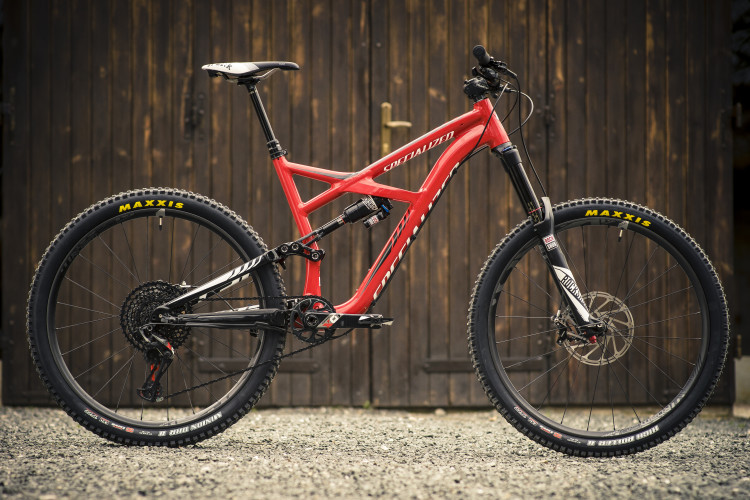
The bike was full SRAM spec’ed: Eagle X01, Rock Shox Lyrik, the new Reverb and the new Roam 60 carbon wheels. With this bike we rode the race tracks for two days long before the race, using shuttles to climb most of the uphills, and we raced on Sunday. We used the XX1 on a Merida 96 for a cross country riding day.
First question off: what’s the difference between the XX1 and the X01? Honestly, from a functional aspect we couldn’t notice any difference.
Most importantly, we were able to ride a 34T front chainring, that equals the gears of a 2×10 drivetrain with 24-36 on front and a 11-36 cassette. The first thing we noticed is how silent the drivetrain is, in every gear. The shifting is extremely precise, even when shifting from the 42T to the 50T cog under tension, and that surprised us, because the difference is quite big: 8 teeth. The general feeling was very good, also because the gears are the same of the SRAM 1×11 we are used to, with the addition of the 50T.
The 50T cog is a kind of “emergency” gear, when the trail becomes really steep or the rider is very tired. We used mostly the 36T and 42T gears, and that’s quite good in perspective of the durability of the cassette, because they are of steel, while the 50T is of aluminum.
Given that the 1×12 with 34-50 has the same gear range as the 2×10 with 24-36, its influence on the pedaling is quite different. The bike seems more efficient, especially on the technical uphills. Probably it’s because of the frame kinematics, optimised for a bigger chainring than we normally use. During the race we loved the possibility of using a bigger chainring, therefore avoiding going too often into the small cogs, where the chain tend to slap more. We rode with no chainguide at all, the chain never dropped, as a combination of the new clutch and the new chainring tooth profile.

We loved the fact that we could pedal(ride) faster on the downhills: with the 34-10 it’s easy to reach 40 km/h pedaling, and this can be an advantage when racing. Combined to the fact that the 50T cog allows to climb every steep trail in sight, the Eagle reaches the purpose of widening the reach of the single chainring drivetrains, even for those who felt the 1×11 was too short, both for racing and for recreational purpose. We will talk about its durability and reliability at the end of a long term test.
Last but not least: the rear derailleur never needed to be tightenened to the frame during our week of riding.
[ad12]

